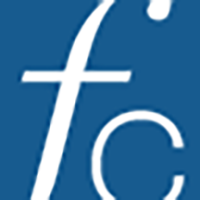The Three Levers of Creating Brand Exclusivity
In this episode, “The Three Levers of Creating Brand Exclusivity,” we focus on tools brands have to facilitate exclusivity with a focus on Chanel’s recent announcement to raise the price of their bags.
Chanel’s recent announcement to precipitously inflate prices on their bags, and limit quantities customers can purchase, has hit the headlines, with some questions about how the luxury fashion industry continues to grow despite overall economic inflation. And in this case, considering the level of the price change, Chanel is not raising its prices to combat higher costs, but rather to become more exclusive, to break away from other luxury brands.
Luxury brands have always had three clear levers in which to build exclusivity.
The first is brand name and corresponding brand power, which over time creates value. French brands have long excelled at building value through branding, starting with the court of Louis XIV at Versailles and then becoming more sophisticated at the turn of the 20th century, with the likes of Louis Vuitton and his LV trademark, and later Chanel. Over time, these brands developed an entity that is part truth, part myth—a sum bigger than its parts. It’s no wonder, that even in today’s world, it’s often easier to resurrect a dead brand, than start a new one.
The second lever is access, typically related to geography. As many luxury brands began early in the 20th century, the only way to purchase a Schiappareli dress, for example, was to go to Paris to the atelier. Over time, as retailers like Bergdorfs in the U.S. began carry these collections, then the focus became on exclusive styles at certain boutiques, and more recently a limit on how much one can purchase at any given time. Both of these examples are “manufactured access,” wherein a brand manipulates what customers can buy.
The third lever is price. Luxury has always been focused on those who could afford it, and that often meant the ability to pay for high-priced items, as well as the ability to travel to purchase them. And what’s more, price often connotes quality in the consumer’s mind—true or not—the idea that if it is more, then it must be better. As luxury brands became more accessible worldwide, price often became the first tool a brand used to raise exclusivity.
Which brings us back to Chanel, a well-known and loved brand name, now with shops in all major cities in the world; which means it only truly has its brand name to leverage, as well as it’s price point. And Chanel executives certainly understand that brands—even those that have persisted for 100+ years—will go through ups and downs. After all, it wasn’t so long ago that Chanel bags were seen as in the domain of one’s grandmother, rather than being the current “it bag.” So by raising the price exorbitantly, it takes these bags out of this conversation all together—putting it in a rarified world where price is the single most determinant of value. What’s more, it moves Chanel out of the larger “luxury fashion” market—repositioning it from the likes of Louis Vuitton and Gucci, who have excelled at the game of “mass luxury” — constantly playing trends, but mitigating risk across it’s multi-brand portfolio. It’s a game that Hermes knows all too well, and has worked hard to distance itself from in order to create exclusivity. And now, it’s one that Chanel hopes to copy with equal success.


